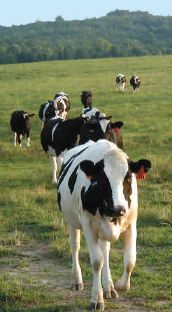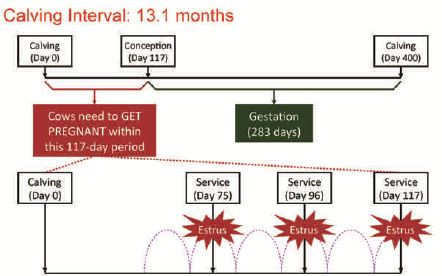



How Good Is Reproduction in Your Herd?
There are many ways of doing the same thing and farmers can learn from each other, was the message of a Virginia State dairy expert after a herd reproduction conference.In March, a group of eight dairy farmers gathered at the Franklin Center in Rocky Mount to discuss the reproductive performance of some herds from Franklin County, writes Gonzalo Ferreira, Management expert at Virginia Cooperative Extension.
The round table discussion group was initiated by Gonzalo Ferreira (Department of Dairy Science) and Cynthia Martel (Virginia Cooperative Extension). The meeting began with discussion of management issues typically observed in agriculture production.
Some of the key points were:

- We all see and/or approach things differently. In the context of dairying, farmers might manage their farm in diverse manners. This can be valuable, as farmers might learn from the management practices of their peers. This concept was the essence of the discussion group: we can all learn from diversity.
- Many times we are so focused on our daily chores that we may not see the big picture with respect to our problems. Discussing dairy management among peer farmers would allow different perspectives. Having a broader vision of dairy management may help farmers make better decisions.
Business will not improve by doing the same thing all over again. There is no change without action. If managers do not do anything to change (hopefully to improve) their businesses, then their businesses will not improve.
The discussion group hopes to inspire farmers to encourage their peers to set new goals, but most importantly strives for a move to action in improving their businesses.
The meeting continued with a review of some reproductive performance concepts such as heat detection rate, conception rate and pregnancy rate; and how these indicators are related to calving interval (Figure 1).
To the surprise of many, the bad news was that the average pregnancy rate of nine herds from Franklin County was as low as 14.6±4.5 per cent. The good news was that there is a lot of room for improvement. In addition to discussing actual results, the attendees weighed which areas they should focus their efforts for the short term.
Some of the mentioned areas included: decreasing days to first service (3 cases), increasing heat detection rate (3 cases) and optimizing conception rate (2 cases). In conclusion, there is much to improve in relation to reproductive performance in some areas of the state. Now, it is a matter of taking those necessary actions for improvement.
As for the discussion group, we will gather again on one of those farms with the best reproductive performance indicators. Without a doubt, we all have something to learn from these successful cases.



